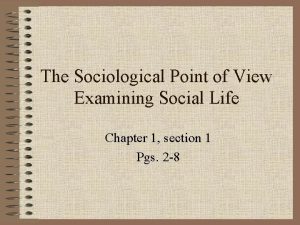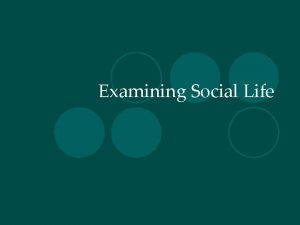Helpers and Halos Examining Social Evaluation in the

- Slides: 1

Helpers and Halos: Examining Social Evaluation in the Domain of Prosocial Behavior Xiao Min Chang & Kristen A. Dunfield Department of Psychology, Concordia University, Canada Humans are a uniquely cooperative species 1. Though cooperation can confer benefits, it comes with risks. One way individuals can minimize potential risks is to preferentially help 2 those with a history of cooperativeness. Previous research has demonstrated that this selectivity can be based on both relevant information, such as past prosocial acts 3, and irrelevant 4 information, such as positive trait of luckiness. Yet, the underlying cognitive mechanisms are still unknown. The current study sought to differentiate between two potential mechanisms: dispositional evaluations, where helpers are preferred because they are likely to help again, and global evaluations, where helpers are preferred because they are generally positive. In the present study, we examined the effects of two broad categories of characteristics – prosocial characteristics (e. g. , willingness to help) and social characteristics (e. g. , gregariousness) – on adults’ decisions regarding whom to help. If dispositional evaluations are used, we predicted that only prosocial characteristics would lead to selective helping. On the other hand, if global evaluations are used, both prosocial and positive social characteristics should lead to selective helping behavior. Question What kinds of social evaluation are made when people engage in selective prosocial behavior? I he lp t als he h elp att o h rac elp er! tive th I peo e ple ! e h t p l e Ih ! y l n o r e p l e h Methods Participants Results & Discussion Forty-eight Psychology undergraduates at Concordia University; four males. Materials & Procedures Thirty-two vignettes describing two characters that vary on a specific characteristic, with 16 describing prosocial characteristics and 16 describing social characteristics. Familiarization of characteristic Prosocial Social Manipulation check Positive question Negative question Test question Help Share Comfort Forced-choice Variables Prosocial Social IVs Global evaluation? Contact: xmchang@live. com Inform Likert-scale Characteristic DV: character selected 1 0. 8 0. 6 0. 4 0. 2 0 -0. 2 -0. 4 -0. 6 -0. 8 -1 Forced-choice ** Likert-scale F (1, 46)=751. 47, p<. 001 Prosocial Social Figure 1. Scores on prosocial and social characteristics when presented with Forced-choice option and Likert-scale option. The value 0 means the chance level. Scores above 0 refers to a tendency to select positive characters, and scores below 0 shows a tendency to select negative characters. Participants preferred to help individuals who demonstrate positive prosocial characteristics but negative social characteristics. **p<. 01. Response type Dispositional evaluation? Tendency of selection Introduction Forcedchoice Likertscale These results are somewhat consistent with a dispositional evaluation, participants showed a strong preference for helping the previously prosocial characters. In contrast, for social characteristics participants preferred to help the disadvantaged characters, suggesting that dispositional evaluations are used in conjunction with other mechanisms, such as empathy to support cooperative relationships. Future research is needed to further explore this unexpected pattern of results. References 1. Warneken, F. & Tomasello, M. (2009). The roots of human altruism. British Journal of Psychology, 100: 455– 471. 2. Trivers, R. L. (1971). The evolution of reciprocal altruism. Q. Rev. Biol. 46, 35– 57. 3. Dunfield, K. A. , & Kuhlmeier, V. A. (2010). Intention-mediated selective helping in infancy. Psychol. Sci. 21, 523– 527. 4. Olson, K. R. , Dunham, Y. , Dweck, C. S. , Spelke, E. S. , & Banaji, M. R. (2008). Judgments of the lucky across development and culture. J. Pers. Soc. Psychol. 94, 757 – 776. Acknowledgments With thanks to Drs. William Bukwoski and Diane Poulin-Dubois, the participants, CRDH, and members of the CSCD lab.

